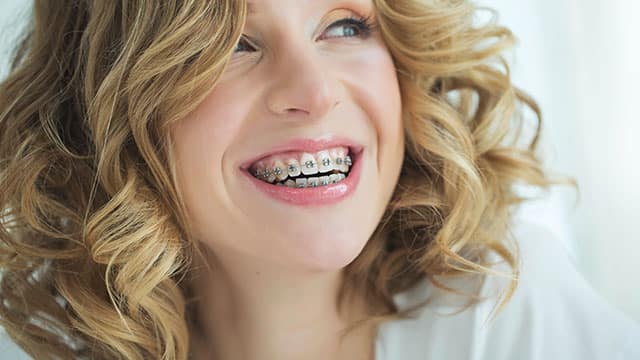What is a Crossbite?
A crossbite describes when the lower teeth cover one or more upper teeth when you bite. Crossbite is sometimes called a misaligned bite or malocclusion because it's an irregular contact between the upper and lower teeth. This intermittent contact can happen in several places in the mouth.
Symptoms of a Crossbite
Symptoms of a crossbite can include headaches, jaw pain, and tooth decay. Crossbite can also affect the appearance of the teeth and lips. A crossbite in the teeth at the back of the mouth can cause teeth grinding, abnormal facial development, jaw problems, and wear on the teeth.
What is Malocclusion?
A crossbite is a form of malocclusion. Malocclusion is an irregular or rough contact between the upper and lower teeth. When the upper and lower teeth align, chewing and biting is easier. Misaligned bites may lead to worn enamel, cracked, or broken teeth.
What Causes a Crossbite?
There are several causes of malocclusion, including:
- A mismatch between the jaw size and size of teeth
- Thumb sucking or tongue thrusting habit
- Premature loss or missing teeth
Crossbite Treatments
In most instances, crossbite correction involves orthodontics, including options like braces. Braces are usually used in childhood or early adolescence when the jaws are still developing and growing. However, it is never too late to seek treatment. Orthodontists can treat both children and adults. Treatment is often in phases and sometimes requires extraction of the baby teeth or even permanent teeth. In rare cases, surgery may be necessary, especially in severe instances. A maxillofacial surgeon does this orthognathic procedure to shorten the lower jaw to allow proper teeth alignment.
Proper care of the teeth and mouth, like brushing and flossing, is critical for the best results throughout any treatment. Braces can create significant challenges in keeping the teeth clean and healthy. Your dental hygienist will recommend techniques to help fight decay.
When patients are young, orthodontists can adjust the shape and alignment of jaws and teeth more easily. Braces or dental restorations can still be effective for correcting mild misalignment, even for older patients. However, if the crossbite is severe, the patient may need jaw surgery.
Your age, the cause, and the type of crossbite will impact which treatment your dentist or orthodontist recommends. There are six possible treatment options:
- Braces. Braces straighten the upper and lower teeth to align the bite in the correct position. Children and adults can benefit from braces.
- Palatal Expanders. If a small upper jaw not fitting well with the lower jaw is causing the crossbite, orthodontists can increase the size of the upper jaw with palatal expanders. Fixed expanders gradually widen the jaw using a tool. Removable expanders are worn at night.
- Headgear. The headgear attaches to your head and face and puts gentle pressure on the teeth with wires. The force on the teeth and jaw can increase or slow the jaw's growth. Headgear is typically prescribed for children and teenagers because their jaws are still growing and easier to adjust.
- Tooth Removal. The orthodontist may recommend removing teeth to create more room to move the lower teeth back before fitting braces.
- Dental Restorations. Bonding, capping, and reshaping teeth can also improve mild misalignment.
- Surgery. Adults' jaws are typically more challenging to adjust with non-invasive treatments, so your dentist or orthodontist may refer you for corrective surgery.
Oral Care During Treatment
Work with your dental hygienist on maintaining your oral hygiene routine while going through treatment. Bacteria that cause tooth decay can thrive in nooks and crannies around braces. The truth is that crossbite can only be corrected with the help of a dental professional. Talk with your dentist if you're concerned about your crossbite or any malocclusion. They can find the best treatment for your case, and you can take care of that misaligned bite.
This article is intended to promote understanding of and knowledge about general oral health topics. It is not intended to be a substitute for professional advice, diagnosis or treatment. Always seek the advice of your dentist or other qualified healthcare provider with any questions you may have regarding a medical condition or treatment.
ORAL HEALTH QUIZ
What's behind your smile?
Take our Oral Health assessment to get the most from your oral care routine
ORAL HEALTH QUIZ
What's behind your smile?
Take our Oral Health assessment to get the most from your oral care routine















